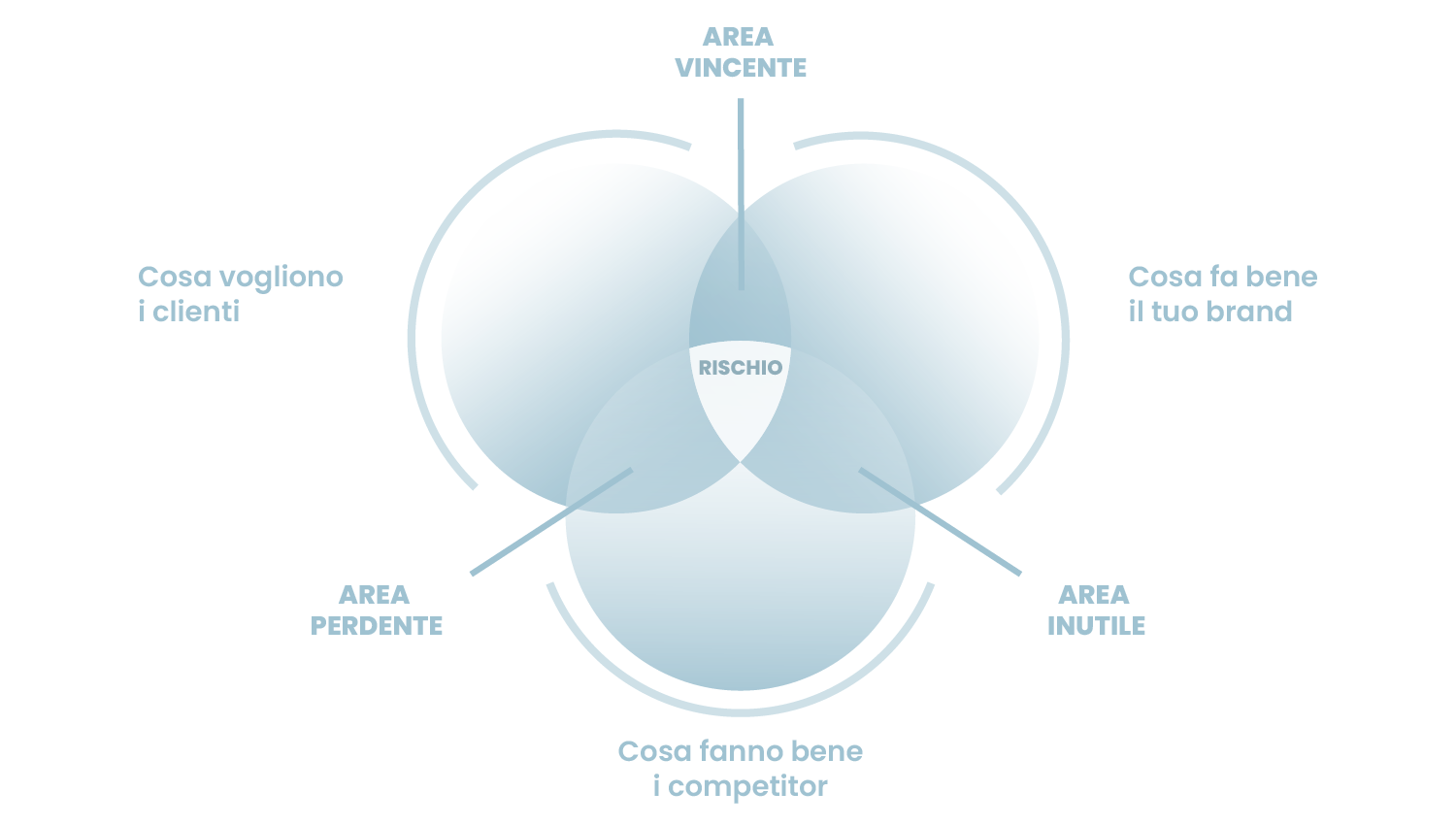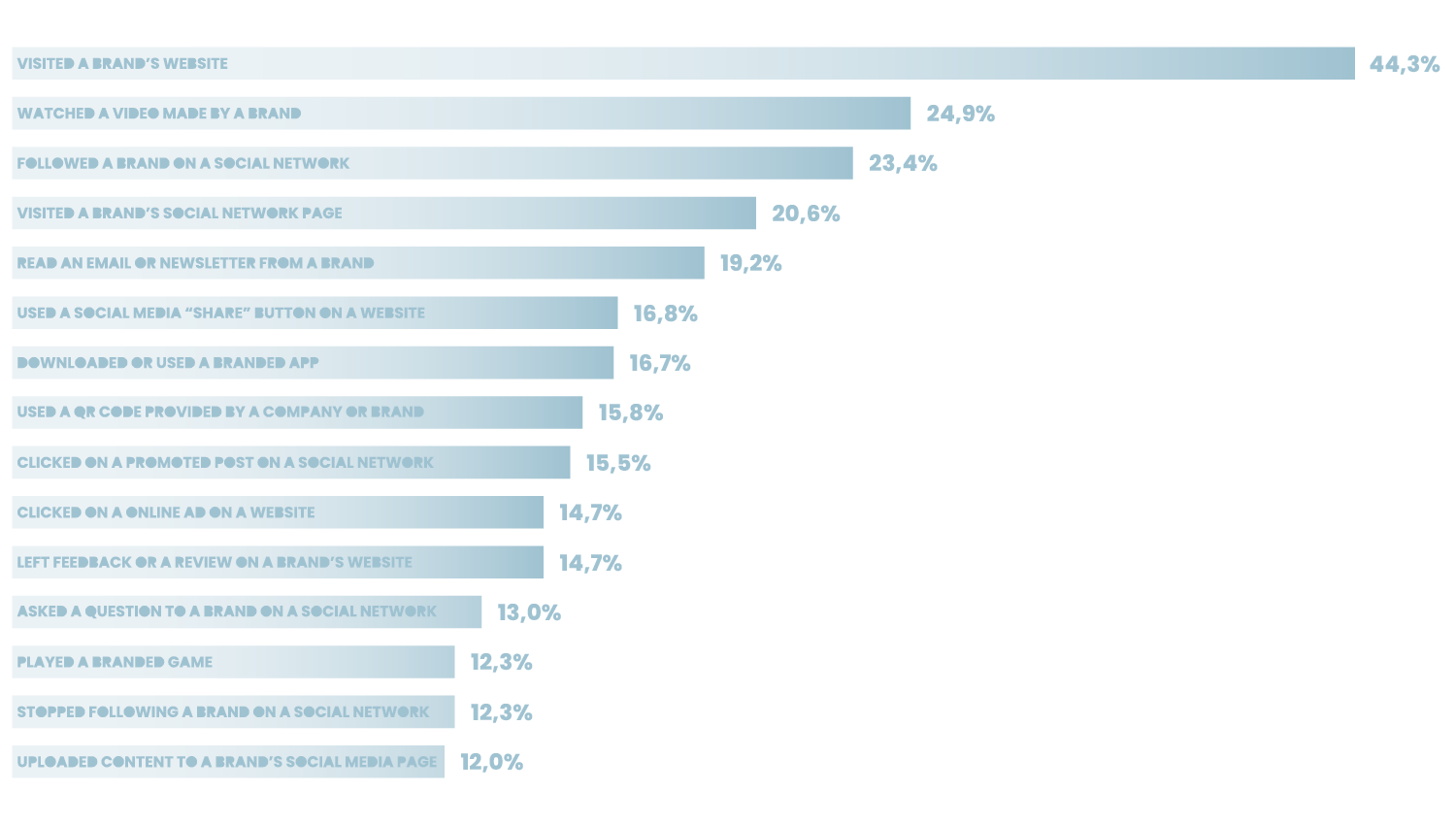BEING UNIQUE IS NOT ENOUGH
"Your company's most valuable asset is how it is perceived by its customers."
/ Brian Tracy
01.
Brand Positioning
BRAND POSITIONING... BUT WHERE?
Where to Win
Brand positioning refers to the place that a brand or company occupies in the mind of the target audience. In the wine sector, effective positioning is crucial. For many consumers it is not easy to distinguish wines that share the same specifications, winemaking techniques and/or occasions of consumption. It’s necessary therefore to work on the perception that customers have of a particular brand, understanding the selection and evaluation criteria that they apply.
KEY POINT:
The place to position your brand must be unique compared to your competitors, interesting for customers and, above all, conquerable.
A MATTER OF PERCEPTION
Brand positioning map
Working on positioning means first understanding how people perceive our brand, then bringing that image as close as possible to the identity we would like to have. Identifying differentiating factors is a key step in this activity. Among the elements to consider are the specifications of the product, the territory of reference and any ancillary services, but also the style of communication, the company history and the personality of its faces.
KEY POINT:
It is important to bring together the perception your target audience has of your brand with the one you would like them to have. The more we can close the gap, the easier it will be to achieve success.
WHAT ARE YOUR TOUCH POINTS?
Where you meet your audience
One of your differentiators lies in the channels and ways you choose to use to connect with your potential customers and establish stable relationships with them. Each of these “access points” has different characteristics, rules, styles, needs and objectives. Finding the ones that best suit your brand's identity and positioning is essential.
KEY POINT:
Brands must pay attention to all channels that, in some way, can effectively communicate their identity and contribute to the desired positioning.
8 POINTS ON WHICH TO DEVELOP AN EFFECTIVE BRAND EFFECTIVE POSITIONING
OBIETTIVI
Set specific goals for your brand positioning and prioritize them to optimize effort and resources.
01
MARKET
By analyzing the market and key competitors, find the niches and potential positioning opportunities that best suit your brand.
02
AUDIENCE
Draw an identikit of your ideal customers and study their needs, desires and behaviors. Creating Buyer Personas can be helpful.
03
DIFFERENTIATION
Identify what makes your brand unique in its target market and place these elements at the center of all your communication.
04
MESSAGING
Develop key messages that are functional to your brand positioning work and make sure that they are consistent across all your touch points.
05
STRATEGY
Define in detail which marketing, communication and advertising strategies you will use to implement your brand positioning.
06
MONITORING
Evaluate the effectiveness of your brand positioning activities over time by keeping your key performance indicators (KPIs) well monitored.
07
UPDATE
Make your brand positioning strategy flexible in response to market changes, customer feedback, and new trends.
08
Matching your perceptions of value with your customers' expectations and becoming a reference point for them: this is the key to the success of the strategy.
In today's environment, brands need to fully understand people's needs and expectations.






